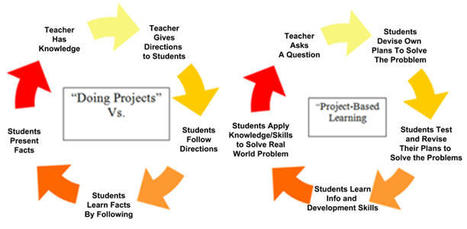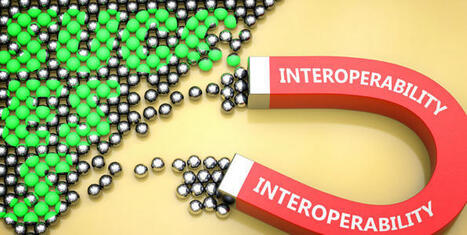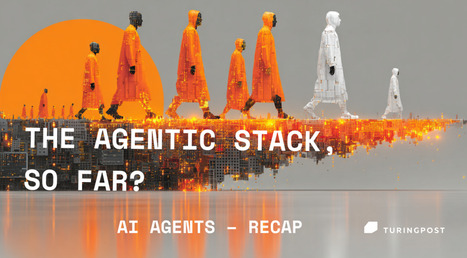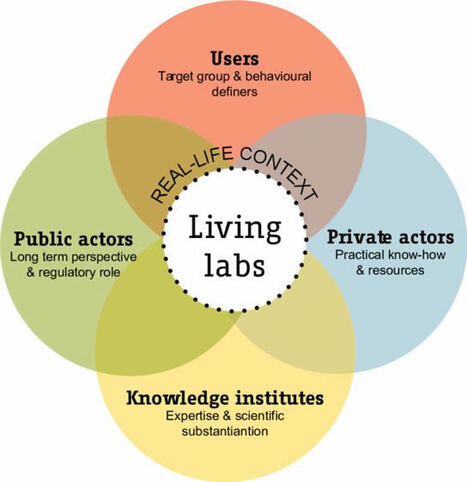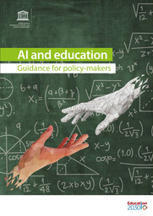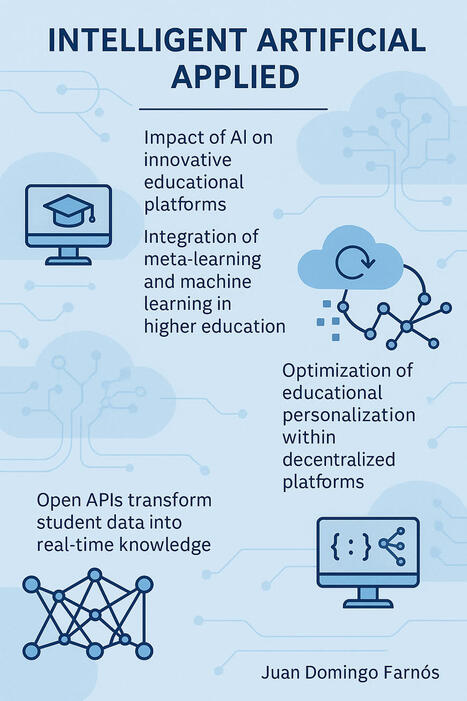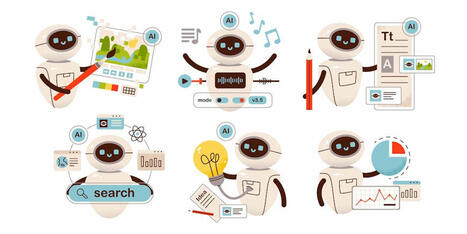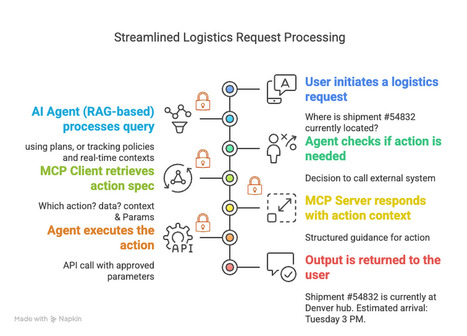 Your new post is loading...
 Your new post is loading...

|
Rescooped by
juandoming
from Edumorfosis.it
July 19, 3:33 AM
|
The advent of ChatGPT, and the subsequent rapid improvement in the performance of what has become known as Generative AI, has led to many pundits declaring that AI will revolutionize education, as well as work, in the future. In this paper, we argue that enthusiasm for the use of AI in tertiary education is misplaced. A proper understanding of the nature of the outputs of AI suggests that it would be profoundly misguided to replace human teachers with AI, while the history of automation in other settings suggests that it is naïve to think that AI can be developed to assist human teachers without replacing them. The dream that AI could teach students effectively neglects the importance of ‘learning how’ in order to ‘learn that’, that teachers are also role models, and the social nature of education. To the extent that students need to learn how to use AI, they should do so in specialized study skills units. Rather than creating a market for dodgy educational AI by lowering their ambitions about what they can offer, universities should invest in smaller class sizes and teachers who are passionate about their disciplines. To flourish in the future, just as much as they do today, societies will need people who have learned to think and not—or not just—intelligent machines.
Via Edumorfosis

|
Rescooped by
juandoming
from e-learning-ukr
July 18, 10:33 AM
|
Discover how integrating artificial intelligence and critical thinking strategies can foster transformative learning experiences in higher education. Learn how educators can model, guide, and support students in navigating AI with intention, reflection, and integrity.
Via Vladimir Kukharenko

|
Rescooped by
juandoming
from e-learning-ukr
July 17, 10:14 AM
|
This collection explores how social media can be used to develop skills, shape pedagogy and foster online learning communities, as well as support academics in building their professional profiles and extending the reach of their research
Via Vladimir Kukharenko

|
Rescooped by
juandoming
from Educación a Distancia y TIC
July 17, 10:13 AM
|
"When a high school student uses AI to design a community mural or a college freshman collaborates with peers across continents on a digital storytelling project, it’s clear the boundaries of learning are shifting. Classrooms are no longer just spaces for absorbing information; they’re becoming creative studios where students use technology to solve real-world problems."
Via EDTECH@UTRGV

|
Rescooped by
juandoming
from Learning & Technology News
July 15, 12:18 PM
|
Discover how integrating artificial intelligence and critical thinking strategies can foster transformative learning experiences in higher education. Learn how educators can model, guide, and support students in navigating AI with intention, reflection, and integrity.
Via Nik Peachey

|
Rescooped by
juandoming
from Education 2.0 & 3.0
July 15, 12:17 PM
|
Why are we still giving so many tests? First, the obvious reason; the state and other entities require us to give standardized tests each year. Ok, I think we can all agree this is the most pressing reason, and it has a trickle-down effect that we will get into later (i.e. the only way to get kids
Via Yashy Tohsaku

|
Scooped by
juandoming
July 14, 5:12 AM
|
Juan Domingo Farnos ((((Interoperability attracts success - pictured as word Interoperability on a magnet to symbolize that Interoperability can cause or contribute to achieving success in work and life, 3d illustration)))) La interoperabilidad en la educación disruptiva y el uso de IA en la educación superior se presentan como un desafío complejo pero vital para…
The three essential dimensions of education systems and curricula in terms of how students interact with that curriculum: Engagement: Students might engage because they recognize the value of what they’re learning, even if they don’t particularly enjoy it. Multiple factors drive this engagement—teaching styles, content relevance, cultural factors—all contributing to whether students see value in what they’re learning. Commitment: This describes how willing students are to invest effort and persist with the learning process, whether through following established structures or driving their own learning forward. Agency: This means having the ability to make decisions appropriately at their age level, having choices that genuinely impact outcomes, and opportunities to make good choices.
Via Edumorfosis, Ricard Lloria
"A new report found middle and high school students, regardless of age or location, are discussing the same challenges with AI bots."
Via EDTECH@UTRGV

|
Rescooped by
juandoming
from eLearning
July 9, 8:08 AM
|
Discover 10 inspirational examples of microlearning in learning and development (L&D). Explore how bite-sized content can transform corporate training.
Via CommLab India

|
Rescooped by
juandoming
from Education 2.0 & 3.0
July 8, 4:21 PM
|

|
Rescooped by
juandoming
from e-learning-ukr
July 8, 8:57 AM
|
|

|
Scooped by
juandoming
July 18, 10:35 AM
|
Juan Domingo Farnos La educación del futuro está siendo definida por un conjunto de paradigmas científicos y tecnológicos que abarcan desde la ingeniería avanzada hasta la teoría cognitiva, pasando por la automatización inteligente y los enfoques inclusivos. En este contexto, el concepto del “Aula del Futuro” representa una reinvención importante de la educación superior, impulsada…

|
Rescooped by
juandoming
from e-learning-ukr
July 18, 2:39 AM
|

|
Rescooped by
juandoming
from e-learning-ukr
July 17, 10:14 AM
|

|
Rescooped by
juandoming
from Educational Technology News
July 17, 10:12 AM
|
AI models are trained to optimize outputs, but in educating children, the process is the point. If we assess children only in terms of what can be “trained,” we repeat the mistake of emphasizing output over experience.
Via EDTECH@UTRGV

|
Scooped by
juandoming
July 15, 12:19 PM
|
Juan Domingo Farnos La emergencia de sistemas autónomos en contextos sociotécnicos no puede seguir circunscribiéndose a lógicas computacionales reduccionistas ni a epistemologías de diseño desprovistas de agencia ética. La Inteligencia Artificial aplicada, en su manifestación más compleja, exige ser repensada como una ontología operacional que articula capacidades de inferencia distribuida, gobernanza algorítmica y metabolización adaptativa…

|
Rescooped by
juandoming
from Educational Technology News
July 15, 12:18 PM
|
The term "AGI" is gaining more usage. Melanie Mitchell, a professor at the Santa Fe Institute, shares what you and your students should know about it.
Via EDTECH@UTRGV

|
Rescooped by
juandoming
from Learning & Technology News
July 15, 2:26 AM
|
In the last couple of weeks I've come across a few interesting articles relating to AI that have made me think and question my opinions, so I'm sharing them here to see what you think and whether they do the same for you.
Via Nik Peachey

|
Rescooped by
juandoming
from e-learning-ukr
July 14, 5:10 AM
|
Review of: "Artificial Intelligence and Digital Technologies in the Future Education
Via Vladimir Kukharenko

|
Scooped by
juandoming
July 10, 10:50 AM
|
Juan Domingo Farnós En la era de la hiperconexión algorítmica, ya no investigamos sobre el mundo, sino con el mundo. Este giro fundamental, que denominamos Investigación Evolutiva Inteligente (IEI), representa una ruptura definitiva con los paradigmas epistemológicos del siglo XX. La IEI se basa en una interacción continua entre agentes humanos y no humanos, donde…

|
Rescooped by
juandoming
from Education 2.0 & 3.0
July 10, 1:06 AM
|
Training success depends on the Golden Triangle of Instructional Design: aligning objectives, content, and assessments to drive performance.
Via Yashy Tohsaku
“Our focus is on skills, not tools. What do we want students to learn? That comes first,” says Bill Bass, innovation coordinator at a Missouri schoo
Via Ana Cristina Pratas

|
Scooped by
juandoming
July 8, 8:59 AM
|
Juan Domingo Farnós Hacia una Universidad Evolutiva en la Era de la IA Agentic y la Educación Disruptiva Vivimos una transformación sin precedentes en la historia del conocimiento. En una época donde la velocidad del cambio tecnológico sobrepasa los ciclos de las políticas educativas, la educación superior se enfrenta al reto —y a la oportunidad—…
|



 Your new post is loading...
Your new post is loading...

![[PDF] Bullshit Universities: The future of Automated Education | E-Learning-Inclusivo (Mashup) | Scoop.it](https://img.scoop.it/TZrJjjpkobBxhKEOwJNn6Dl72eJkfbmt4t8yenImKBVvK0kTmF0xjctABnaLJIm9)









